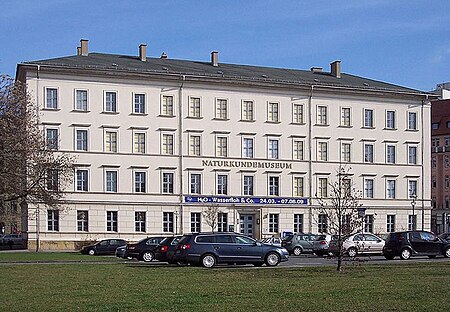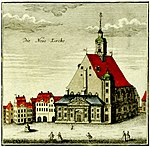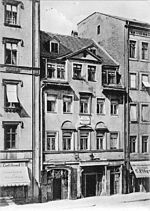Natural History Museum, Leipzig
German museum stubsMuseums in LeipzigNatural history museums in GermanySaxony building and structure stubs

The Natural History Museum in Leipzig (German: Naturkundemuseum Leipzig) is a natural history museum in the city of Leipzig, Germany. The museum contains the insect collection of Alexander Julius Reichert.
Excerpt from the Wikipedia article Natural History Museum, Leipzig (License: CC BY-SA 3.0, Authors, Images).Natural History Museum, Leipzig
Lortzingstraße, Leipzig Centre North West (Mitte)
Geographical coordinates (GPS) Address Phone number Website External links Nearby Places Show on map
Geographical coordinates (GPS)
| Latitude | Longitude |
|---|---|
| N 51.344919444444 ° | E 12.370861111111 ° |
Address
Naturkundemuseum
Lortzingstraße 3
04105 Leipzig, Centre North West (Mitte)
Saxony, Germany
Open on Google Maps









